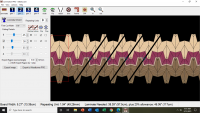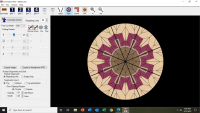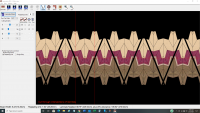K
KYTurner
Guest
Hi,
In Lamination pro, creating a disc whose outside diameter as displayed by laminate pro is 11", I am being told that I need 93.38 inches of laminate. I admit that I am new to the program, but jeez, what's up with that dimension? The circumference of that circle is only 25 inches, so I would expect a laminate of maybe 30 inches or so. Can you explain please? File from LP save attached.
In Lamination pro, creating a disc whose outside diameter as displayed by laminate pro is 11", I am being told that I need 93.38 inches of laminate. I admit that I am new to the program, but jeez, what's up with that dimension? The circumference of that circle is only 25 inches, so I would expect a laminate of maybe 30 inches or so. Can you explain please? File from LP save attached.



